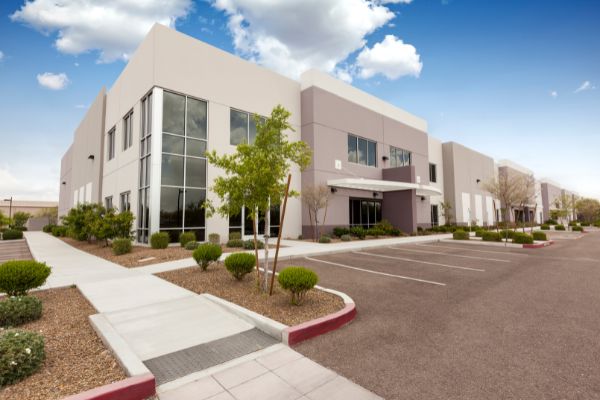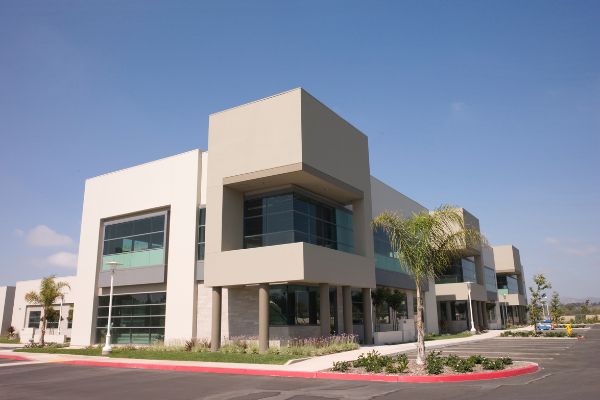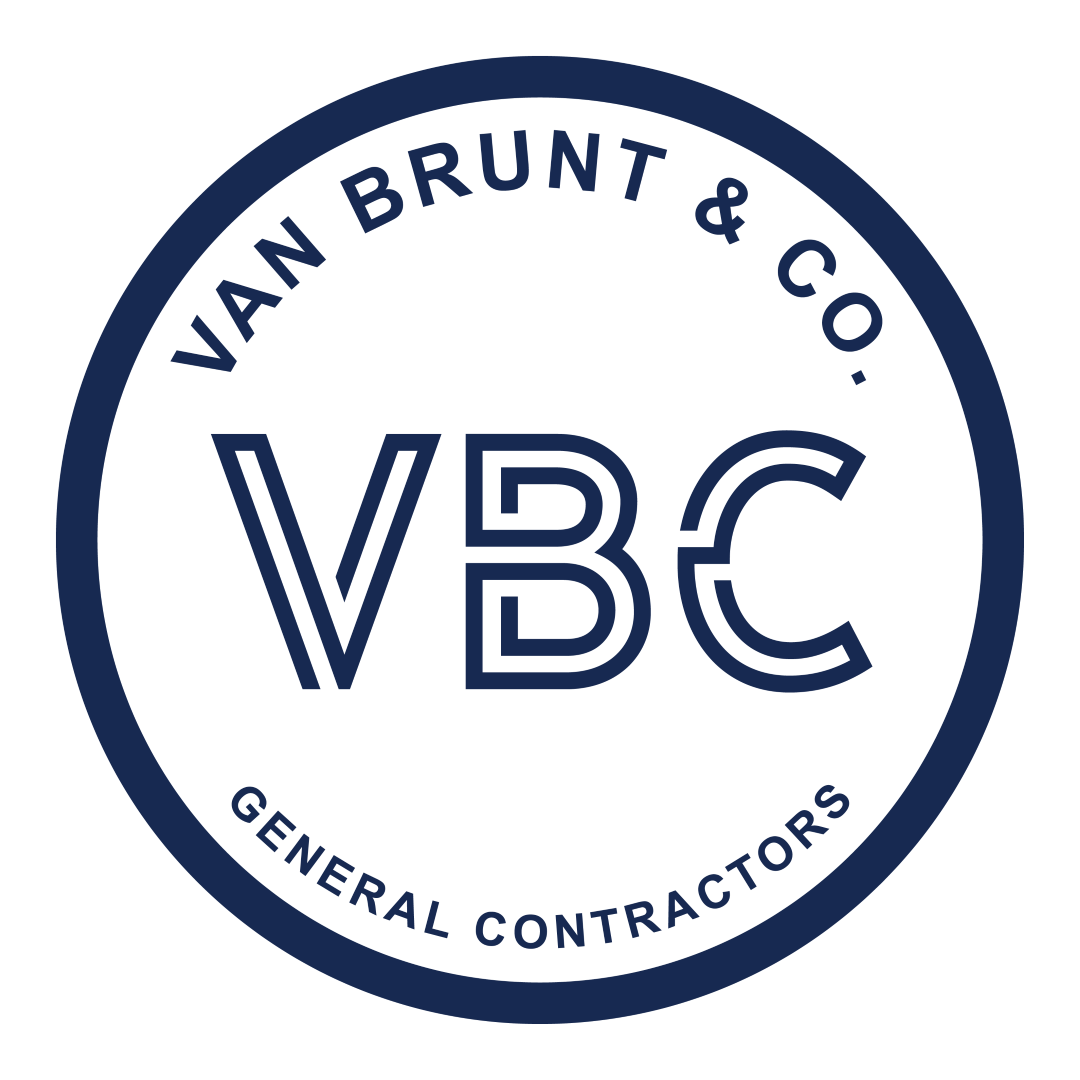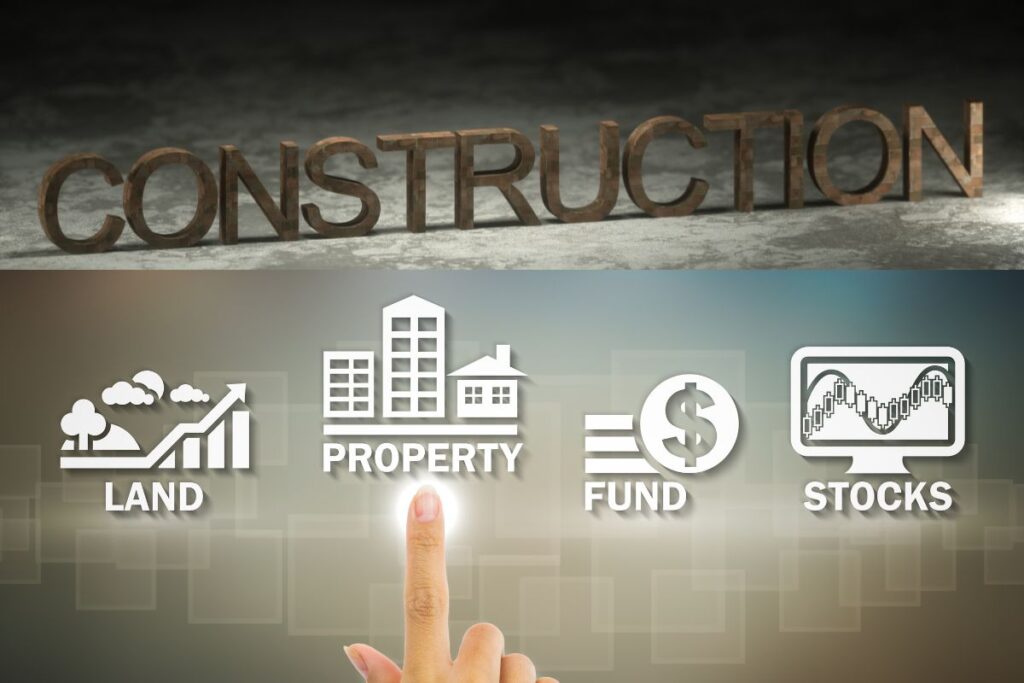Medical office construction has become a growing focus as the pandemic reshaped how we view essential industries. While many sectors struggled, the healthcare industry stayed strong. This strength opened new opportunities in healthcare real estate, especially medical office buildings (MOBs).
Unlike retail or standard office spaces, MOBs have remained steady. This makes them a promising option for investors looking to grow and balance their portfolios. With people still needing in-person healthcare, demand for well-located medical buildings is not going away.
Investor interest in medical office buildings has risen as traditional workspaces lose relevance. Healthcare spaces, on the other hand, continue to serve critical, everyday needs. Recent trends also show that returns in healthcare real estate are compressing, but this has not slowed interest. Instead, it highlights growing competition and confidence in the sector.
In the larger world of building construction, MOBs stand out for their long-term value. They often bring reliable tenants and consistent foot traffic. These qualities help reduce risk and improve stability, even in uncertain markets.
This guide helps you understand if investing in medical office real estate is right for you. It explains how these spaces work, current market trends, and what benefits and risks to expect. By the end, you’ll be better equipped to decide if this investment matches your financial strategy and comfort level.

What Exactly Is a Medical Office Building?
Medical office buildings (MOBs) are properties made specifically for healthcare services. These spaces are different from regular office buildings.
They include rooms for exams, patient waiting areas, and specialized layouts. MOBs support medical work with features like advanced ventilation systems. These systems help keep air clean and reduce the risk of spreading germs.
Soundproof walls are another common feature to protect patient privacy during visits. This makes the environment more comfortable for both patients and staff.
You’ll often find MOBs near hospitals, nursing homes, or clinics. Some are part of a hospital campus and have close ties to large health systems. Others are located in suburbs or rural areas and work more independently.
These buildings are used by all types of medical professionals, including doctors, dentists, and specialists. Inside, you’ll find a mix of exam rooms and waiting areas, all designed for patient care.
Many doctors choose to own their own buildings, especially in off-campus locations. Others prefer to lease space and let real estate companies handle property management. Whether through ownership or leasing, each MOB begins as a carefully planned construction project tailored to healthcare needs.
As demand for healthcare continues to grow, these buildings remain an important part of the medical industry’s infrastructure.

Understanding the Types of Medical Office Buildings: A Guide for Smart Investors
Investing in healthcare real estate can be a powerful way to grow and diversify your portfolio. One of the most promising sectors in this space is medical office buildings, commonly known as MOBs. These properties are built specifically for healthcare providers and come in different forms, each offering unique advantages.
Whether you’re a seasoned investor or just exploring opportunities, knowing the different types of MOBs can help you make better financial decisions. Here’s a breakdown of the three main categories: Class A, Class B, and stand-alone medical office buildings.
Class A Medical Office Buildings: Premium and High-Demand Spaces
Class A medical office buildings are the gold standard in healthcare real estate. These buildings are newly built or recently updated through high-quality renovations using top-tier materials. They’re typically located next to major hospitals or large healthcare centers, and often designed with cutting-edge features.
Doctors and specialists choose Class A buildings because they offer a full suite of services in one place. These shared facilities help reduce overhead, while offering patients convenience and comfort.
Key Features of Class A MOBs:
- Built with premium materials and modern construction standards
- Located near or attached to major hospitals and clinics
- Often developed or managed by healthcare REITs or hospital systems
- Equipped with advanced technology and digital tools
- Offer shared services like lab testing, radiology, and pharmacy access
Top Benefits:
- Lower overhead costs through shared space and resources
- Streamlined operations using electronic health records and cloud-based imaging
- Better patient experience due to convenience and centralization
- Appeal to high-end tenants including specialty physicians and large medical groups
- Great locations in urban centers or growing suburban hubs
The rising demand for convenient and tech-enhanced care makes Class A MOBs a strong long-term investment. As urban and suburban populations grow, expect to see more of these buildings under development.
Class B Medical Office Buildings: Reliable and Accessible Investments
Class B MOBs offer solid value and reliable returns. These buildings are often a bit older than Class A properties but are still well maintained and fully functional for medical use. They’re commonly located near hospitals, on the same campus, or just a short drive away.
These properties appeal to medical professionals who want more autonomy while still benefiting from proximity to hospitals. Class B buildings also tend to attract a steady tenant base, including large medical companies and physician groups.
Key Features of Class B MOBs:
- Mid-rise or low-rise structures
- Managed by private investors, hospitals, or physician groups
- Located close to, but not necessarily on, hospital campuses
- Offer basic amenities and well-kept facilities
- Commonly host outpatient clinics and general practices
Top Benefits:
- Lower purchase price compared to Class A buildings
- Good access for patients and staff
- More independence for healthcare providers
- Attracts stable tenants including national medical companies
- Ideal for smaller practices looking for cost-effective solutions
Class B medical offices are a great option for investors seeking dependable income with less risk. The demand for these buildings remains strong, especially in areas with growing healthcare needs but limited hospital space.
Stand-Alone Medical Office Buildings: Independent and Flexible Options
Stand-alone medical office buildings are usually smaller and independently owned. These properties house one practice or a small group of providers. While they don’t offer the same shared resources as Class A or B buildings, they do offer full control and flexibility.
Physicians who own their practice often prefer stand-alone MOBs for the freedom they provide. These buildings are common in rural areas or neighborhoods where large-scale healthcare centers aren’t available.
Key Features of Stand-Alone MOBs:
- Typically owned by a single physician or small group
- Smaller size, often one to two stories
- Located away from hospital campuses
- Can be customized to specific practice needs
- Offer private, quiet settings for patient care
Top Benefits:
- Full ownership control for the practice owner
- Flexible use of space tailored to individual needs
- Potential for rental income if space is shared with other providers
- Lower acquisition costs than larger facilities
- Ideal for specialists or niche healthcare providers
Despite being less common today, stand-alone MOBs still offer value—especially in locations with limited competition. Investors can also turn these buildings into multi-tenant assets, which helps spread risk and increase returns.
Choosing the Right Medical Office Investment
Each type of medical office building serves a different purpose and attracts different kinds of tenants. Whether you’re looking for high-end, tech-ready spaces or prefer smaller, independent buildings, there’s an MOB to match your goals.
- Go with Class A for high-growth markets and top-tier healthcare providers
- Choose Class B for steady returns and strong tenant demand
- Consider stand-alone buildings if you’re aiming for control and flexibility
Understanding your investment strategy, target market, and tenant needs will help guide your decision. With healthcare demand continuing to rise, MOBs remain a smart, long-term investment option worth serious consideration.

What’s Happening in the Medical Office Building Market?
Growing Investor Interest
Medical office buildings (MOBs) are gaining attention from investors due to their steady income potential. Compared to traditional offices, MOBs have stronger rent growth—1.8% on average, versus 1.4% for standard office spaces.
Built-In Diversification and Stability
MOBs offer a smart way to diversify real estate portfolios and reduce risk. They range from small, single-tenant clinics to large multi-tenant medical centers. Their flexibility makes them attractive for various investment strategies.
Healthcare’s Economic Strength
The healthcare sector is known for staying stable during economic downturns. That’s why institutional investors and REITs are turning to MOBs. These buildings consistently perform well and are seen as reliable long-term assets.
Telehealth Hasn’t Slowed Demand
Even though telemedicine has grown since the pandemic, MOBs remain in high demand. Many treatments and checkups still require in-person care. This ongoing need helps protect the value of medical office properties.
New Construction Still Moving Forward
In 2024, 43% of medical office construction projects were on time and within budget—up from 40% the year before. This shows that development in this sector remains healthy despite market challenges.
Future Outlook for MOBs
As more investors recognize the strength and resilience of medical offices, competition will rise. Property prices may increase, but so could rental income due to limited new construction. For long-term growth and stability, MOBs are a promising investment choice.
Key Benefits of Investing in Medical Office Buildings
As real estate investors search for stable and recession-resistant assets, medical office buildings (MOBs) are becoming a top choice. The healthcare industry’s consistent growth, even during economic downturns, makes these properties stand out. Whether you’re a seasoned investor or exploring real estate for the first time, MOBs offer long-term value through strong tenant demand, reliable income, and specialized infrastructure that supports in-person healthcare.
This section explores the key benefits of investing in medical office real estate—from historical performance to tax advantages and portfolio diversification. Understanding these benefits can help you make smarter, more confident investment decisions.
Proven Track Record of Performance
Medical office buildings have a reputation for delivering steady, reliable returns over time. While many commercial real estate sectors—like retail or traditional office—have seen instability, MOBs have consistently held their ground.
In 2020 and 2021, roughly 90% of healthcare real estate firms reported stable or rising occupancy rates. That’s impressive, especially during a global pandemic. Additionally, 80% of experts consider the sector recession-resistant, making it a safe harbor during uncertain times.
One reason for this strength is the long-term nature of healthcare leases. Providers often sign leases lasting 10–20 years because of the customized build-outs required for medical services. This translates into long-term occupancy, stable income streams, and fewer turnover-related costs for owners.
As the demand for healthcare grows—due to aging populations and expanding treatment options—this track record is expected to continue. Investors looking for predictability will find confidence in the numbers behind MOB performance.
Healthcare’s Resilience During Economic Downturns
Medical office buildings shine in tough economic times. When people cut back on shopping or entertainment, they don’t skip doctor visits. That’s why MOBs are more resilient than most commercial assets.
The healthcare industry is largely unaffected by consumer trends or seasonal slowdowns. Services like diagnostic imaging, physical therapy, surgeries, and blood tests must be done in person. This non-negotiable need keeps traffic flowing into MOBs regardless of economic cycles.
Moreover, demand is growing due to a shift in how healthcare is delivered. There’s a major push toward preventive care and outpatient services, and many patients prefer treatment in smaller, more accessible clinics over crowded hospitals.
Properties with diverse medical tenants—such as general physicians, lab services, and imaging providers—spread risk across different specialties. This diversity boosts resilience and helps these buildings perform well under pressure.
Tax Advantages That Can Maximize Returns
Beyond dependable income, MOBs may offer appealing tax benefits. Thanks to the Tax Cuts and Jobs Act of 2017, certain owners can take advantage of accelerated or bonus depreciation.
This tax incentive allows investors to deduct more of the property’s value upfront, lowering their taxable income in the early years. For investors with high earnings, this can significantly improve cash flow and open the door to acquiring more properties.
Keep in mind, tax benefits vary based on your investment structure and goals. It’s best to consult a tax advisor, but the potential here is real—and another reason MOBs are growing in popularity.
Steady Tenant Demand and Long-Term Occupancy
One of the biggest strengths of MOBs is their dependable tenant base. Healthcare providers tend to be financially stable and reliable. Many have strong credit and run practices that are critical to the communities they serve.
MOB tenants often include doctors, dentists, dermatologists, physical therapists, and diagnostic labs. These professionals rely on proximity to hospitals, pharmacies, and other providers. As a result, MOBs create healthcare hubs, which further attract new tenants and help sustain occupancy rates.
The physical customization of MOBs—like advanced HVAC systems, soundproof rooms, and specialized plumbing—makes relocating expensive and inconvenient. This leads to high tenant retention and long-term leases.
With an aging population, the demand for in-person medical care is expected to grow. Baby boomers, in particular, will need more frequent checkups, treatments, and wellness visits—further boosting the value of MOB investments.
Strong Portfolio Diversification
Diversification is a cornerstone of smart investing. Medical office buildings offer a unique way to diversify within the real estate market.
Unlike retail or hospitality, which rely heavily on consumer behavior, MOBs are anchored by essential services. This makes them more resistant to economic volatility.
MOBs also bring tenant diversity within a single building. From primary care to urgent care, from imaging centers to outpatient surgery suites—these spaces can house a wide range of healthcare services under one roof.
This variety provides multiple income streams and lowers the risk associated with relying on just one type of tenant. It also encourages cross-referrals and collaborative care models, increasing building usage and tenant satisfaction.
In periods of uncertainty, having MOBs in your portfolio can stabilize returns and provide consistent cash flow.

What to Know Before Investing in Medical Office Buildings
Medical office buildings (MOBs) offer attractive investment potential due to their resilience, tenant stability, and rising healthcare demand. However, success in this space requires careful planning and smart decision-making. Before jumping in, investors should evaluate several key areas to reduce risks and maximize returns.
By considering office management structures, location, size, tenant profiles, and infrastructure adaptability, you’ll be better prepared to make a sound investment in the healthcare real estate sector.
Evaluate the Office Structure and Flexibility
One of the first things to assess is the condition and flexibility of the building. Some MOBs may be older but located in highly desirable areas. These properties might require renovations, but they often have strong long-term value due to prime locations and patient visibility. Renovations can also offer tax benefits and improve rent potential.
On the other hand, newer medical buildings in less central areas might not attract as many patients or high-paying tenants. While modern features are attractive, they must be paired with a good location to deliver value.
Investors should also consider how adaptable the space is for modern medical needs. Healthcare continues to evolve, and tenants often require spaces that can grow or change with them. Look for buildings with modular layouts, flexible floor plans, and open infrastructure that can support new equipment and services.
A space that easily accommodates new technologies, like telemedicine tools or advanced imaging machines, is a better long-term bet. Features such as universal exam rooms, shared service areas, and integrated tech capabilities will attract top-tier tenants looking for efficient, modern workspaces.
Office management also matters. Buildings should be organized, tech-ready, and equipped for quick transitions. A well-managed office supports tenant satisfaction and long-term occupancy—two essential ingredients for steady returns.
Location Matters More Than Ever
Location is a top factor in any real estate investment, and that’s especially true for medical offices. Where the property is located will impact everything—from patient access to rental income.
On-campus MOBs, situated next to hospitals or medical centers, are highly sought-after. They benefit from steady patient flow and often house specialists tied to the hospital’s network. This connection creates referral opportunities and streamlines patient services.
Off-campus MOBs, meanwhile, provide convenience to patients in suburban or residential areas. These buildings often serve as neighborhood clinics and offer a more relaxed setting than large medical campuses. In many cases, off-campus locations offer more flexibility, lower overhead costs, and a closer connection to community-based care.
Accessibility is also key. MOBs located near main roads, public transportation, or major intersections will see more foot traffic and vehicle exposure. These factors can directly influence patient volume, business performance, and rental value.
Geography plays a part too. Areas with growing populations or aging residents, such as California, Arizona, and Florida, are seeing increased demand for medical care. These regions often attract retirees and families who prioritize access to healthcare. Investing in high-growth areas increases your chances of finding long-term tenants and generating higher income.
Think About Building Size and Scalability
The size of a medical office building affects both risk and potential returns. Small properties with one or two tenants may offer simplicity but carry more risk if a tenant leaves. Multi-tenant buildings, by contrast, spread that risk across several income sources.
A good investment property should have space for a mix of services. That includes exam rooms, labs, waiting areas, administrative offices, and equipment rooms. Ample square footage means providers can offer more services, which leads to more patient visits and higher revenues.
Consider whether the property has room for growth. Expansion potential can come from available land, build-out space, or the ability to add more floors. A property that grows with its tenants adds long-term value and helps retain them over time.
Also look at key logistical elements. Does the waiting area comfortably support patient flow? Are there enough exam rooms for busy practices? Does the building offer enough parking for staff and patients? These details can influence tenant satisfaction and business performance.
Understand Your Tenants and Their Needs
Tenant quality is critical in healthcare real estate. You want tenants with strong financials, community ties, and sustainable business models.
Start by reviewing the tenant’s credit profile and payment history. A medical office with a tenant group backed by a hospital or national chain may offer more security than an independent solo practitioner.
Next, think about the type of practice. Some specialties, like urgent care, general practitioners, and dental clinics, serve broader patient groups. These tenants usually have more consistent demand. Other specialties, like dermatology or orthopedics, may generate higher fees but have smaller patient pools. Understanding this balance will help guide your investment decisions.
Each medical practice has its own space and equipment needs. For example, imaging centers may need reinforced floors for heavy machinery. Dialysis clinics need access to plumbing and water lines. Surgeons may require recovery spaces or surgical-grade equipment setups.
That’s why it’s important to understand not just who the tenant is, but what their daily operations require. A mismatch between the tenant’s needs and the property’s features can lead to expensive modifications or tenant turnover.
Do Your Homework Before You Invest
Investing in MOBs can be a rewarding and recession-resistant move—if approached with the right strategy. By taking time to evaluate building structure, adaptability, location, tenant fit, and scalability, you increase your odds of long-term success.
The healthcare industry is growing. Demand for outpatient care is rising. And medical office buildings sit at the center of that growth.
Before you buy, do the homework. Ask the right questions. Partner with experienced advisors. With a thoughtful approach, MOBs can be one of the most reliable and future-ready additions to your real estate portfolio.

Why Choose Van Brunt & Co. for Your Medical Office Construction?
As demand for medical office buildings (MOBs) continues to rise, choosing the right construction partner is essential. Van Brunt & Co. is a Texas-based design-build firm with deep experience in healthcare construction—making them an ideal choice for MOB development.
Healthcare-Specific Expertise
Medical spaces are far more complex than standard offices. Van Brunt & Co. understands the unique demands of healthcare environments. They design and build spaces with advanced HVAC systems, soundproofing, infection control, and specialized layouts—features that are essential for exam rooms, labs, and treatment areas. Their healthcare expertise ensures your MOB is compliant, efficient, and optimized for patient care.
Streamlined Design-Build Process
Van Brunt & Co. uses an integrated design-build model, managing every phase of building construction from planning to execution. This approach minimizes delays, reduces miscommunication, and ensures accurate budgeting. For MOB projects—where tenant timelines and healthcare compliance matter—this model delivers smooth, on-time completions.
Future-Ready, Functional Design
Their design approach focuses on flexibility and workflow efficiency, key trends in modern MOBs. They create spaces that support tech integration (like telehealth and digital imaging), modular layouts, and long-term adaptability. This is critical as medical practices evolve and the need for outpatient care grows.
Investor-Aligned Project Delivery
Van Brunt & Co. delivers facilities that attract reliable tenants and support long-term leases—two pillars of MOB investment success. Their projects are built for durability, usability, and tenant satisfaction, helping reduce turnover and improve returns. With strong performance metrics—such as consistent on-time, on-budget completions—they align with investor expectations in a competitive real estate market.
Local Knowledge, High Standards
With a deep understanding of local healthcare needs and building codes, Van Brunt & Co. combines regional insight with national-quality standards. Whether you’re developing a standalone clinic or a Class A MOB, they bring the right balance of innovation and practical experience.
Van Brunt & Co. offers healthcare-focused construction, integrated delivery, and future-proof design—all tailored to meet the growing demand for high-performance medical office buildings. Their experience and reliability make them a smart choice for developers, investors, and providers alike.
Conclusion
Medical office buildings (MOBs) are more than a trend—they’re a resilient, growth-focused investment opportunity. With increasing demand for outpatient care and long-term tenant stability, MOBs offer reliable income, reduced risk, and strong diversification potential. Their ability to perform during economic downturns makes them ideal for strategic real estate portfolios. As the healthcare industry expands, so does the need for functional, modern medical spaces. If you’re seeking a future-proof investment with consistent returns, working with experienced medical office builders is a smart move. Partnering with experts like Van Brunt & Co. ensures your MOB is built to high standards and market-ready. Now is the time to act—seize this opportunity and start building a smarter real estate future today.
Frequently Asked Questions
What is a medical office building (MOB)?
A medical office building is designed for healthcare services, unlike traditional offices. It includes exam rooms, labs, and patient areas. These buildings meet clinical needs and ensure regulatory compliance.
Are MOBs good long-term investments?
Yes, MOBs provide stable income through long leases with healthcare providers. They also reduce tenant turnover and improve cash flow. These features make them ideal for lasting investments.
Do telehealth trends reduce demand for MOBs?
Telehealth supports care but can’t replace all services. In-person exams, imaging, and procedures still require physical facilities. Demand for MOBs remains strong.
What types of MOBs exist for investors?
There are Class A, Class B, and stand-alone MOBs. Each varies in cost, tenant appeal, and location strategy. Investors can choose based on goals.
Why work with a healthcare-focused builder like Van Brunt & Co.?
They understand complex healthcare layouts and regulations. Their design-build approach ensures efficiency, compliance, and patient-friendly environments. Projects finish faster and with fewer issues.

